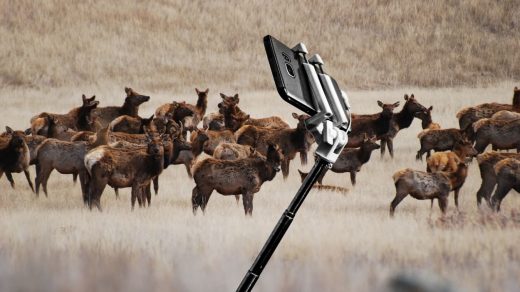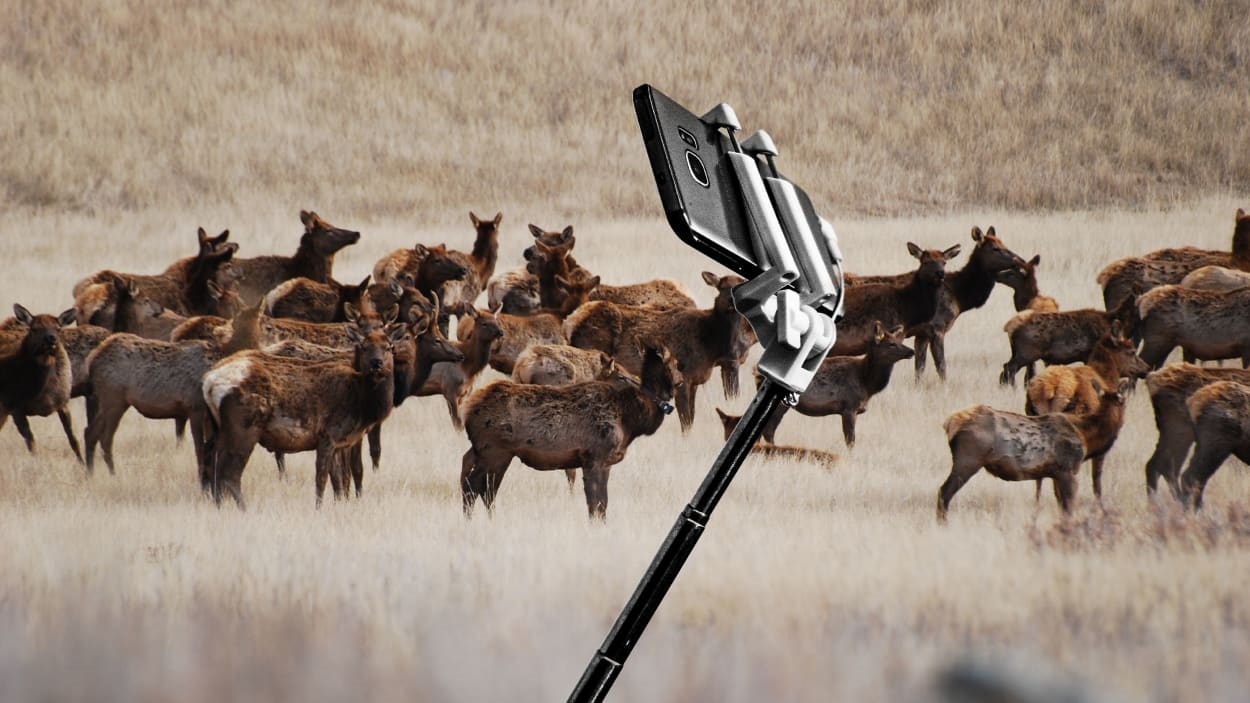Selfie-seeking humans can’t stop dangerously interacting with wild animals at national parks
By Sarah Bregel
In yet another startling incident at a national park, Yellowstone National Park visitors put a newborn elk in their car and drove it to a police station in West Yellowstone, Montana. Park officials said the animal ran away, and that “its condition is unknown.” An investigation as to exactly why the visitors put the animal in their car and attempted to deliver it to the police station is underway.
This latest example of humans interfering with wildlife prompted park officials to release a statement about getting too close to animals.
“Approaching wild animals can drastically affect their well-being and, in this case, their survival,” the news release read. “Park regulations require that people stay at least 25 yards (23 m) away from all wildlife (including bison, elk, and deer) and at least 100 yards (91 m) away from bears and wolves. Disregarding these regulations can result in fines, injury, and even death. The safety of these animals, as well as human safety, depends on everyone using good judgment and following these simple rules.”
It’s hard to know if the statement will have an impact on judgment, however. This kind of dangerous human behavior has seemed almost constant at national parks in recent years. Only a week prior to the event, a man pleaded guilty to intentionally disturbing a bison calf at the park, which later had to be euthanized. That same week, a woman was almost gored when taking selfies with a bison.
In fact, while incidents are taking place at just about every national park, human interference has become so frequent at Yellowstone that there is even an Instagram account dedicated to the tourists attempting to touch, pet, feed, or otherwise engage with wildlife. It’s fittingly called Tourons (tourists+morons) of Yellowstone.
While human beings have always been a curious bunch, the emergence of social media—and by extension social media influencers—has meant that people seeking online attention sometimes put likes and shares ahead of good sense.
That’s not just true when it comes to posting extra racy thirst traps or misinformed political rants. It’s true even when humans encounter wild animals—wild animals that humans should have a healthy fear of but somehow don’t. In 2017, the World Animal Protection Organization (WAP) reported a 292% increase in wildlife selfies posted to Instagram since 2014. With even more social media platforms gaining popularity since then, it makes sense (but not good sense) that close encounters are often in the headlines.
If you love something, set it free
The influx of animal selfies, and the dangerous scenarios that so often accompany their creation, prompted WAP to create the Wildlife Selfie Code, urging humans not to disturb animals for photo ops, which can stress or otherwise harm animals. Instagram followed suit, by adding content advisories to selfies featuring wildlife.
Six years later, though, it seems like too many park goers have not gotten the message, leaving park officials with the task of figuring out how to manage the uptick in human interference. Morgan Warthin, the chief of public affairs at Yellowstone, told Fast Company in an email that visitors “get inappropriately close to wildlife” on a daily basis. Staff, therefore, must monitor visitor activity closely. She urges greater caution and advises potential visitors to take the Yellowstone pledge, a set of rules that keep people, the animals, and the park as a whole, safe.
Aside from the obvious danger (potentially being mauled to death), humans in our plugged-in world sometimes seem to not comprehend their impact on the natural world—at least when there is a photo to be taken. But research shows that even when humans are in the vicinity of wild beasts, the beasts are acutely aware of our presence. A 2022 study in the journal People and Nature found that animals change their behavior even around light human activity. The study set forth that, given that we can’t expect humans not to pass through national parks, management has to play a larger role in how to keep the animals as undisturbed as possible. Sadly, with the uptick in tourists’ reckless behavior in the wild, that appears more true now than ever.
Perhaps humans have become so far removed from the natural world—so tech-zonked and screen-driven—that we forget to leave things wild, or even realize that things are wild. But human ignorance doesn’t stop animals from being animals. If PSAs and good-faith pledges don’t go far enough, parks might soon have to adapt in order to keep the animals safe from the humans—not the other way around.
(16)



